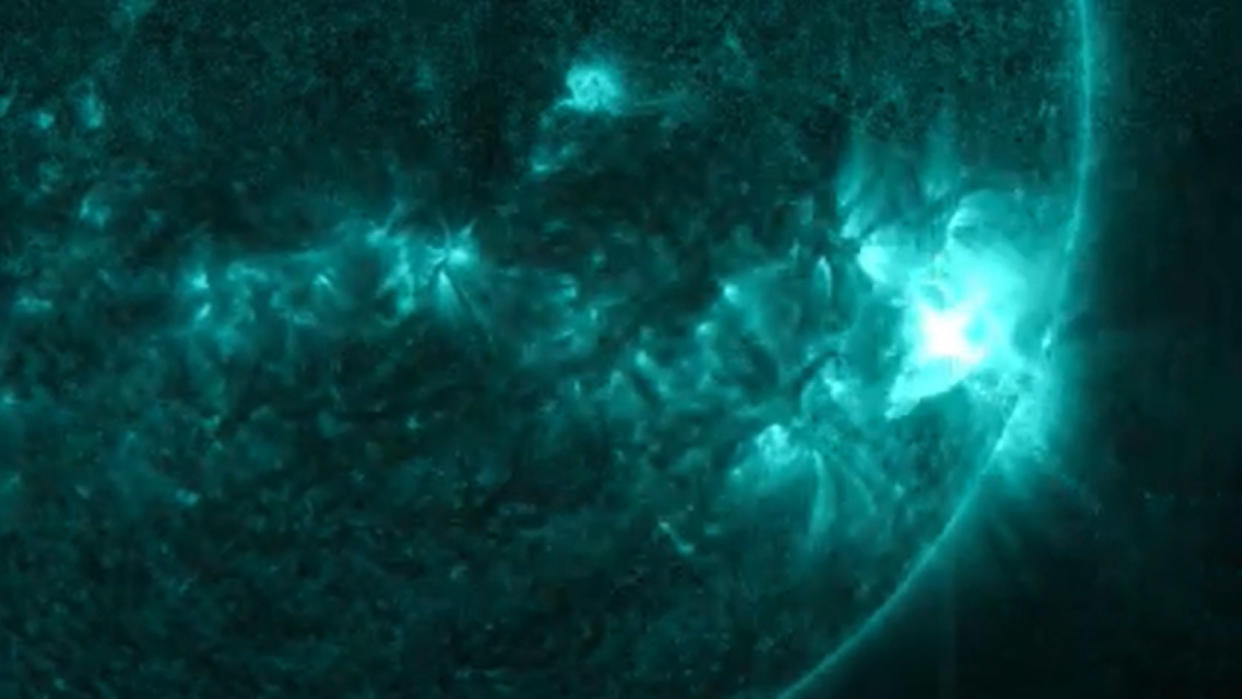'Hole' in the sun and powerful X1.2 solar flare threaten space weather mayhem

A powerful solar flare knocked out radio communications on Earth last night in what space weather forecasters fear might be the beginning of a spell of rough space weather in the coming days.
The solar flare was the most powerful X-class on the 5-grade scale for rating the force of these powerful light flashes and emerged from the largest and most complex sunspot group that space weather forecasters currently observe in the southwestern part of the sun's disk.
The X1.2 solar flare, which flashed at Earth at 10:33 p.m. EDT on Tuesday, March 28, (0233 GMT, Wednesday, March 29) ionized the top layer of Earth's atmosphere, affecting radio communications across southeast Asia, Australia and New Zealand for about one hour.
The same sunspot, a darker, cooler region in the lowest layer of the sun's atmosphere, produced another three somewhat milder flares
Related: Wild solar weather is causing satellites to plummet from orbit. It's only going to get worse.

British space weather forecaster Met Office rates the current activity of the sun as high, with more flares possible in the coming days. The flares, bursts of electromagnetic radiation that travel at the speed of light, may be accompanied by slower-moving coronal mass ejections (CMEs). CMEs are eruptions of charged particles from the sun's upper atmosphere, the corona, that cause the worst problems in our technology-dependent world. Unlike flares, which affect Earth within eight minutes but quickly subside, CMEs take days to reach our planet. The charged particles they contain can penetrate Earth's atmosphere and trigger geomagnetic storms that produce beautiful aurora displays but sometimes also affect power grids and damage satellites in orbit.
Although space weather forecasters don't think a CME is heading toward Earth right now, they still expect turbulent space weather conditions in the coming days. Powerful streams of solar wind are currently flowing from two coronal holes, openings in the sun's magnetic field, and these streams are expected to affect our planet in the coming days. Although not as energetic as the CMEs, solar wind streams from coronal holes have the ability to cause milder geomagnetic storms.
Related stories:
— Satellites can disappear in major solar storms and it could take weeks to find them
— NASA's solar forecast is turning out to be wrong. This team's model is still on track.
— Extreme solar storms can strike out of the blue. Are we really prepared?
According to SpaceWeather.com, last night's X-flare was already the seventh this year. In comparison, the entire year of 2022 saw seven X flares altogether, which means we are now in a very active part of the solar cycle, the 11-year pattern of periodic ebb and flow in the sun's activity. The intense activity is expected as the current cycle, the 25th since records began, is set to reach its maximum in 2025. So get ready for more radio blackouts, more auroras, and possibly also more disruption to power grids and satellite services in the coming months.
Follow Tereza Pultarova on Twitter @TerezaPultarova. Follow us on Twitter @Spacedotcom and on Facebook.

